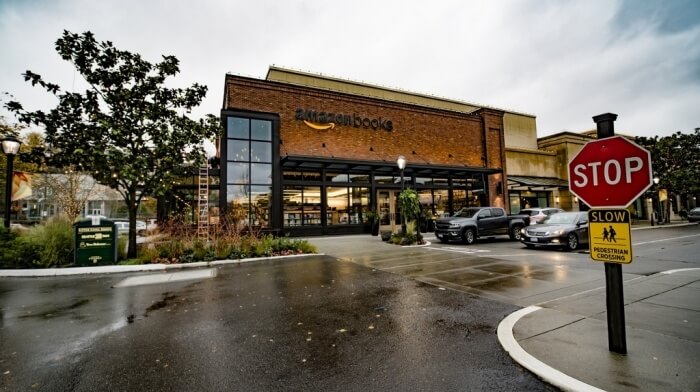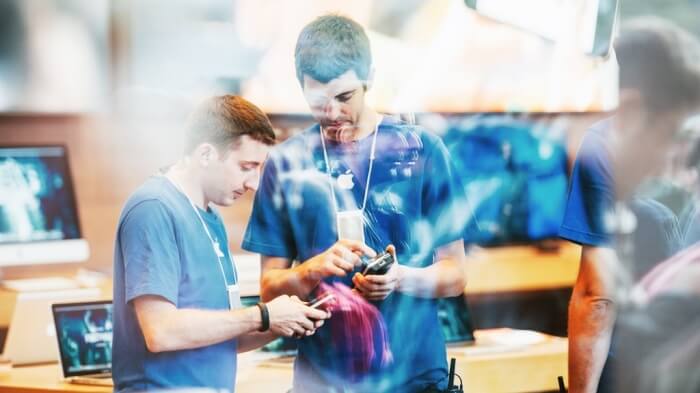Physical Retail: How To Make It Work
Are online-only retailers waking up to the potential of bricks and mortar retail?

Opportunities abound in the realm of physical retail, and previously pureplay online brands are starting to recognise that. The transition might not be easy, but following some simple steps will ensure it’s worthwhile.
It wasn’t long ago that many proclaimed the death of the British High Street at the hands of eCommerce, as shops saw profits slump while online sales grew.
This view only includes half the picture, however – some brands are already shifting their focus away from purely online strategies, and this year we’ve seen increased adoption of multi-channel retail.
Even digital giant YouTube is at it. Having opened its first Creators Store in London last year, it’s taking the format international with spaces in New York, Singapore, Berlin and more besides.
This trend is due to the huge opportunities that multichannel retail holds for brands: as our recent ‘Peaks of shopping’ report highlights, brands which are willing to get physical can make meaningful connections with customers in-store that simply aren’t achievable online.
For the retail industry, the trend is encouraging not just because it demonstrates the value of a physical presence, but also because these new arrivals are bringing new thinking and innovation to traditional bricks’n’mortar.
But going omnichannel effectively isn’t a simple process, and brings several challenges for an entire business, from operations to branding.
What should potential pureplay converts do to change gears and make physical retail work for them? Here are the three crucial points to remember, before you take the plunge.
Don’t rush in
Amazon waited 22 years to dip a toe into bricks’n’mortar with its first Seattle book store. While you may not need to wait quite so long, it’s worth spending time mustering your resources.
Physical stores are not as lean as online-only operations and your cash flow can take a hit at the outset. Make sure you have the appropriate reserves, and a sustainable business plan in place before taking your business to the streets.
The other advantage to biding your time as an online-only retailer is that it enables you to build your brand, while keeping running costs as low as possible. Of course, you want to open a store that people will already know all about before it opens.
By successfully running an online-only store for some time you’ll have built a following and a reputation, which will pay dividends in awareness when you set up shop for the first time, as well as informing several key decisions which might make or break your first store.
Test and learn, then test again
A/B testing, supported by analytics tools, is integral to building and refining digital platforms, so it should already be a part of your pureplay online retail strategy. However, the principle will also inform your transition to physical retail, by answering crucial questions about how your customers experience your store.
For instance: do visitors spend time browsing, or do they focus on a select few products? This insight alone will drastically shape the physical space and the products you put in to it. Further knowledge on most popular products, pricing, customer contact, etc., will further refine the store you choose to create.
However, physical retail is just as dynamic as online. Improving the shopper experience in-store requires a constant desire to test and learn with all aspects of the customer journey to understand potential pain points – including queues, store layout or even your payment methods.
Some of those pain points can be solved with inventory system which can handle both on and offline retail in real time, for accurate profiling and optimisation of stock. It means you won’t end up giving away stock at the till item that was sold online a second ago – which could otherwise deal a huge dent in your customer’s experience!
Get personal in the physical world
Of course, the end goal is to provide the best possible experience for your shoppers. The most powerful tool for physical retail is its immediacy and interactivity – making that work for you will turn your store into a destination for shoppers, not just a place to buy products.
Consider Apple, a brand which famously created a cool store to hang out in. Many proclaimed it a landmark for the industry but Apple has continued to innovate a user-centric approach.
They recently removed the ‘store’ focus of their retail spaces, turning them into hubs for services and immersive events, expanding the remit of their Genius bar to include expert advice and creative workshops for art, music, photograph and more, all face-to-face.
Smaller online retailers have also turned a focus on personal experience. Bonobos’ Guide Shops are set up to provide a personal shopping experience, where a Guide selects items for their customer to try and purchase in-store, but which are subsequently shipped for free.
Successfully marrying the best of online convenience with physical presence and personality makes Bonobos’ Guideshops a strong template for any aspiring multi-channel retailer, including many of its much more established rivals.
You can’t underestimate the value of your staff to make this work. Emotional engagement is a key driver of in-store spending, as our recent ‘Peaks of Shopping’ report highlighted. As online retailers know all too well, eCommerce provides convenience and simplicity. In-store is your chance to create an experience your customers won’t forget.
Thanks for signing up to Minutehack alerts.
Brilliant editorials heading your way soon.
Okay, Thanks!




